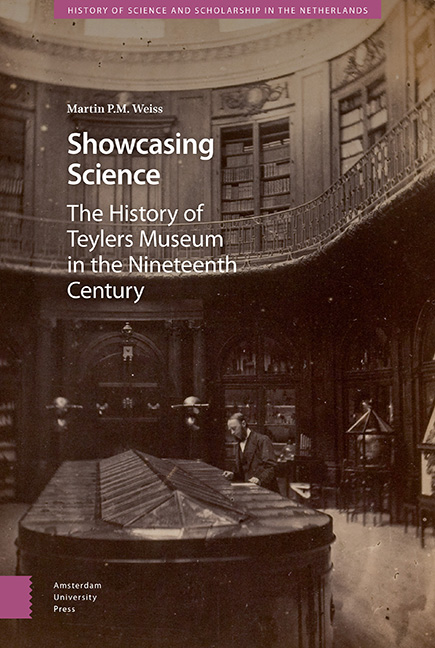Book contents
- Frontmatter
- Contents
- List of Illustrations
- 1 Introduction
- 2 The Birth of a Musaeum
- 3 Van Marum – Empiricism and Empire
- 4 Van der Willigen – Precision and the Discipline of Physics
- 5 Lorentz – Function Follows Form and Theory Leads to Experiment
- 6 Conclusion
- Appendix
- Acknowledgements
- Archives
- Bibliography
- Index
2 - The Birth of a Musaeum
Published online by Cambridge University Press: 21 November 2020
- Frontmatter
- Contents
- List of Illustrations
- 1 Introduction
- 2 The Birth of a Musaeum
- 3 Van Marum – Empiricism and Empire
- 4 Van der Willigen – Precision and the Discipline of Physics
- 5 Lorentz – Function Follows Form and Theory Leads to Experiment
- 6 Conclusion
- Appendix
- Acknowledgements
- Archives
- Bibliography
- Index
Summary
I The Museum's Pre-History
Martinus van Marum and the Beginning of the Age of Museums
In a letter to the Dutch Minister of the Interior Anton Reinhard Falck posted in July 1819, the ornithologist and collector Coenraad Jacob Temminck left no doubt as to what he thought two of his colleagues really wanted to do to him, if the opportunity ever presented itself: “Both”, he wrote, “would stop at nothing to clear me out of the way”. He was referring to Sebald Justinus Brugmans, professor of botany and director of the botanical gardens in Leiden, and Martinus van Marum, the director of Teylers Museum and secretary of the Holland Society of Sciences in Haarlem.
This was more than just a letter of complaint. Temminck himself was no angel, and at the time was in fact pursuing his own political agenda. He had dined with Falck just a few days earlier, and the two men had discussed the establishment of a national museum of natural history in the Netherlands – of which Temminck was to be handed the directorship. Just thirteen months later, Temminck's highly valuable and widely recognised personal ornithological collection, consisting of more than 4000 stuffed birds, had indeed been merged with both the University of Leiden's natural history collections and the former Royal Cabinet of Natural History in Amsterdam, to form the new National Museum of Natural History (Rijksmuseum van Natuurlijke Historie) based in Leiden.
Although Temminck does not explicitly refer to these plans in his letter – but concentrated instead on pointing out how in his opinion the university collections in Leiden were insufficient to form the nucleus of a national collection, which he suspected Brugmans was hoping would be the case – it is highly likely that the plans that were eventually implemented, including Temminck's directorship, were already on the table. Perhaps in order to get ahead of the opposition, and sensing that he currently held the upper hand, Temminck urged Falck to make haste with his plans of establishing the national museum, adding in a thinly veiled threat that “if a national museum comes to nothing, or if the facilities remain inadequate, no one shall be able to blame me if I continue my eager quest for the extension of my knowledge of nature in another country”.
- Type
- Chapter
- Information
- Showcasing ScienceA History of Teylers Museum in the Nineteenth Century, pp. 27 - 110Publisher: Amsterdam University PressPrint publication year: 2019



